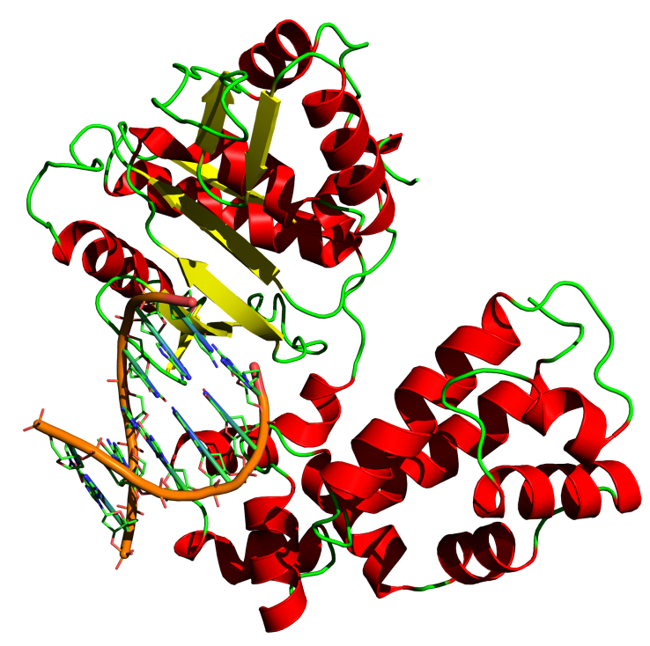
If a man matches at only 13/15 markers on a paternity test, can he be ruled out as the dad?
October 8, 2014

- Related Topics:
- Paternity tests,
- Consumer genetic testing,
- Relatedness
A curious adult from California asks:
"I have heard that if a man matches at only 13 out of 15 markers on a paternity test, he can be ruled out as the dad. Is that true?"
No, not really. There are certainly cases where a man only matches a child at 13/15 of the spots tested and is the dad.
Now I knew this to be true but I didn’t really have a feel for how common this sort of thing is. That is why I reached out to Kim Gorman at Paternity Testing Company (PTC) and asked her about it. Here was her reply:
“In our experience about half the time when there are only two non-matching loci on a 15 loci test, the man is the father of the child. We require a minimum of 4 non-matching loci in order to declare that a man is not the father of a child.”
So you can see that it is surprisingly common. This means if you get a 13/15 result back and the company reports that the man is not the dad, you should probably follow up and get some additional testing. There is still a good chance he is the dad.

Now we know it can happen but how does it happen? After all, if the man is the father he should match at all 15…that is the whole point of these tests.
The reason a 2/15 mismatch doesn’t always rule a man out as the dad is because of new mutations. Basically the DNA that dad passes down to the child has changed at two of the tested spots. The child now has two mismatches with his or her dad in the paternity test.
But the child still matches up with pretty much 50% of dad’s DNA everywhere else. It is just at these two spots and a few others where the two don’t line up.
This happens as often as it does in paternity tests because the spots these companies look at have a higher mutation rate than most of the rest of our DNA. This higher mutation rate is what makes them useful for testing. But unfortunately, it is also what can make them occasionally troublesome in figuring out who the dad is.
Paternity Tests
A paternity test compares a small part of a child's DNA to a small part of a potential dad's DNA. A common test looks at 15 or so of these spots.
The spots they are comparing have lots of different names. They're called microsatellites, simple sequence repeats (SSRs), short tandem repeats (STRs), or variable number tandem repeats (VNTRs).
These are places in the DNA where a certain bit of DNA is repeated. For example, some people may have 10 copies of ATGC at a certain site while others might have 9 or 11 or whatever.
So that's what it means when you get a D3S1358, 17/18 on your test. You have 17 repeats on one chromosome and 18 on the other at D3S1358, a certain spot on that chromosome.
You get back two numbers because you have two copies of each of your chromosomes (except for the X and the Y chromosomes in men). One chromosome of each of your pairs came from your mom and the other from your dad. So in this case, one of your chromosomes has 17 repeats and the other has 18.
Let's look at a single marker to see how this kind of test works. Imagine that mother, son, and potential dad have the following markers at D3S1358:
- Mother: 13, 14
- Potential Dad: 17, 18
- Son: 13, 18
In this case, mom gave the son a 13 and so his father had to give him an 18. This potential man could be the father in this case since he has an 18 to give.
If he had two 17’s instead, then you might think he wouldn’t be the dad. And you’d be right unless his 17 changed to an 18 on the way to being passed to the child. Which happens more often than you might think.
Of course even if both the man and the child had an 18, this doesn’t mean the man is the father. A lot of men have an 18 at that position too.
This is why testing companies look at more than one spot. The more DNA they look at, the more confident they can be that a certain man is the dad. Or that he isn't.
Choosing Markers
Because they don’t test a lot of DNA, paternity testing companies need to pick DNA that tends to be different between people. These STRs fit the bill perfectly. The odds are strongly against any two people matching up at all 15 of these spots.
Unfortunately what makes them so useful can also cause problems with paternity test results. This is because these particular spots on our DNA have a higher chance of changing between generations than many other spots in our DNA.
This is great for giving us a lot of variety to test for but isn’t so great for the test where two of these spots happened to be changed in dad’s sperm. Now the child inherits two markers that the dad does not have in his blood or cheek cells (two commonly tested tissues).
The reason these DNAs tend to mutate more often than other DNAs is because they are DNA repeats. It turns out that the cellular machinery that copies DNA doesn’t do as good a job on repeated DNA as it does on non-repeated DNA.
As it is copying a stretch with repeats, this machinery (called DNA polymerases) will sometimes add a repeat or two or take one or two away. From a health perspective this isn’t a big deal with these bits of DNA as they don’t seem to be doing a lot in the cell. But the same is not true for all our DNA.

Diseases including Fragile X, Huntington’s, myotonic dystrophy, and many more all happen when our cells make a mistake copying repeated DNA. In each case the cell makes a mistake and adds repeats to a certain gene in either sperm or eggs and the DNA with the extra repeats is passed down to a child. That child now ends up with a genetic disease.
Luckily the mutations that a paternity test finds don’t have such a profound effect. The worst they can do is mess with the results of a paternity test.
And if you get tested by the right company, it can’t even do that. The right company will do follow up tests that can more conclusively establish paternity.

Author: Dr. D. Barry Starr
Barry served as The Tech Geneticist from 2002-2018. He founded Ask-a-Geneticist, answered thousands of questions submitted by people from all around the world, and oversaw and edited all articles published during his tenure. AAG is part of the Stanford at The Tech program, which brings Stanford scientists to The Tech to answer questions for this site, as well as to run science activities with visitors at The Tech Interactive in downtown San Jose.
 Skip Navigation
Skip Navigation
